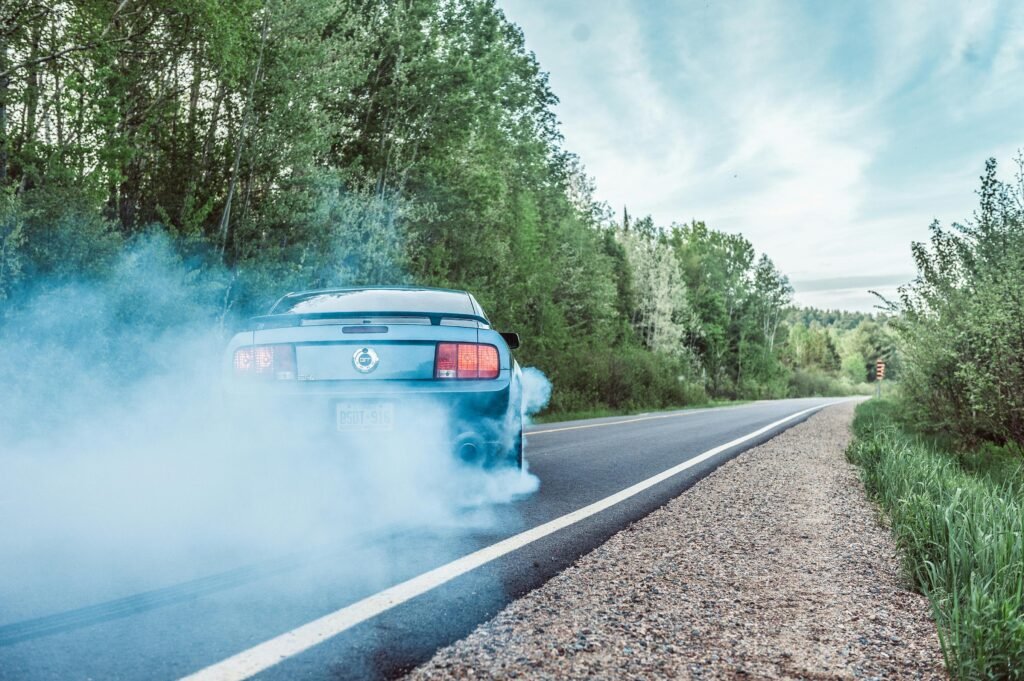What You Don’t Understand About Manual Cars | 3 Key Facts
I do this practically every time I share info about cars. Today’s driver is my mighty BMW M2.
For everyone who owns a car, it’s their soul, definitely. So you must know your car’s heart better than anyone.
The car’s heart is the engine, but to reach the heart, you have to go through the gears. So, a manual gear is the best.
If you are a manual car guy, you should learn a few of the most important things about manual gears.
Minimum Speed
The first thing nobody seems to mention when talking about driving manual is understanding the minimum speed in each gear. My car’s engine struggles at first, but in second, it’s happy. So 6 mph is the minimum speed for this car.
We’re going to figure out the speed in second gear. 12 mph is fine, 11 mph is fine, and 10 mph is when it just starts to struggle.
Now we know that in first gear we can go up to 6 mph, and in second gear, we can go at 11 mph.
You can hear the engine starting to struggle at 15 mph, which is the minimum for third gear.
Let’s figure out fourth gear. 23 mph feels unsettled, but 24 mph is comfortable.
We don’t really need to figure out fifth and sixth because they’re generally quite long gears. But if you’ve got a car with a smaller engine and shorter gears, you probably want to figure out fifth as well.
Now, why is this important?
I’m coming into this roundabout.
The reason I knew I needed second is that I didn’t drop below 11 mph. It’s so useful to understand the minimum speed in each gear.
I’ve got to go over a speed bump. I know I can do it in third because I’m not going under 15 mph.
Now there’s a really nasty speed bump here. This one’s really stiff, and I know I need to drop down to second gear because I have to go over it at about 11 mph.
I never hear people talking about this, and it’s such a fundamental part of being able to drive a manual really well. Why is this useful?
It’s so good because it helps you make educated decisions about which gear to select.
One of the things that people really struggle with when it comes to driving a manual is just knowing what gear to be in. But if you know the minimum speed for every gear, then you automatically know which gear to select.
Be very careful: every car is different. Do not take the numbers I’ve given you in this car and apply them to yours. They’re going to be very different. My M2 has very, very long gears.
This is also really good for fuel economy. I know the minimum speed for fifth in this car is about 27 mph. I can cruise down here at 30 to 33 mph and use fifth, which is going to give me better fuel economy.
I’m in an M2. Why the hell am I talking about fuel economy, right? But there’s a reason I actually manage to get reasonable fuel economy out of this car.
Because I understand these things and drive around the gearing in the car. If you’ve got a car that’s more fuel-efficient than this—which is 99% of cars—you’ll do even better.
There’s a reason why, since the start of owning this car, I’ve been averaging 26 miles to the gallon. That’s not normal for a manual, 500-odd horsepower sports car. But it’s imperative to understand the minimum speed because, at all times, when you drive a manual, you have to make a decision about what gear you’re going to use.
Rev Matching
Rev matching or heel and toe. This car has a rev-matching feature that will do this all for me, but I have disabled it because those that don’t have this feature can also relate.
We’re going to have a chat about rev matching and heel and toe.
It is imperative, especially for fast driving, but to be honest, I usually heel and toe during everyday driving. I come up to a corner, and I want to drop a gear, so I have to match the revs.
When driving a manual car, you always have to think about protecting the drivetrain. When you’re driving quickly, the drivetrain is under more stress. If you’ve got a lot of revs and you’re changing gear without heel and toe, you’re going to decimate your clutch, flywheel, and gearbox, to be honest.
Heel and toe is the ultimate expression.
The first step is just to learn how to rev match. Once you’ve got rev matching down, heel and toe is much easier to learn.
So what can you do if you’re a beginner?
You can separate the two actions. You can get your gear changes done first, and then you can brake. It’s a little bit easier on your feet. When coming up to the corner, you drop the gear first, then get on the brakes, and you get around the corner in the correct gear.
If you don’t do this, say, for example, you’re in fourth gear and you don’t yet know how to rev match or heel and toe.
You just brake into the corner, go around, and hold the same gear. Suddenly, you’re out of the power band, and you don’t have the responsiveness from the engine that you might want.
So what you really want to do as you’re coming into a corner is rev match once, rev match a second time, and then get on the brakes. This is a lot slower, and you have to be more sensible.
You can’t go 10/10, or to be honest, even 7/10 with this strategy.
This is the one and only method that I learned, and there’s nothing wrong with admitting the fact that you’re learning.
I use rev matching even on a daily basis. I mean, again, this car will do it for you, so most of the time, I just leave it on and let it do it for me. But it is incredibly satisfying when you drop a gear before a corner and then just rock it out. What a feeling!
I can give you a perfect example:
In the corner, down one gear, down another gear, now we’ve got the perfect gear to get out of here.
I’m a poet, and I didn’t even know it.
I’m going to do a block change this time. All the way down to third—big old rev match from sixth to third is very enjoyable if you can get it right.
Which is easier said than done.
That’s kind of the beauty of a manual. There’s just more interaction with the car, more to do, and more fun to be had.
Protect Your Drivetrain
Now, the third and final point is that your job when you’re driving a manual is to protect your drivetrain.
That should be your primary, and most of the time, only consideration for how you drive. What you’ve got to understand—without trying to give an engineering lesson—is what you’re doing when you operate the clutch pedal.
You’re operating two big spinning metal discs. When they’re spinning at different speeds and you mash them together, you’re going to get wear. Wear is inevitable. You can’t stop it, but don’t be the type of person who’s replacing a clutch every 30,000 to 50,000 miles.
This equipment can last 100,000 to 200,000 miles without a problem, if you treat it the right way. But if you don’t, you’re going to get a tenth of that. It’s all down to how you drive. It’s down to your mechanical sympathy. Every time you come on or off the clutch pedal and feel an impact in your body, those two metal spinning discs—one is the clutch, and one is the flywheel—are coming into contact at different speeds and wearing each other. That’s what causes that feeling.
If every time you’re changing gears, you’re being thrown forwards or backwards, that’s not a good sign. It means you’re doing something wrong. It means you’re harming your drivetrain and wearing it out faster than it should be.
Now, there are times when you have to be a bit aggressive—if you’re driving quickly or on a track day. There are times when you’ll choose to be rough on the drivetrain, but that should never be the default. It should never be by accident; it shouldn’t just be because that’s the way you drive.
So, be very conscious if you’ve got a passenger, and at every gear change, at every clutch engagement, they are being thrown backwards and forwards. You’ve got a problem.


